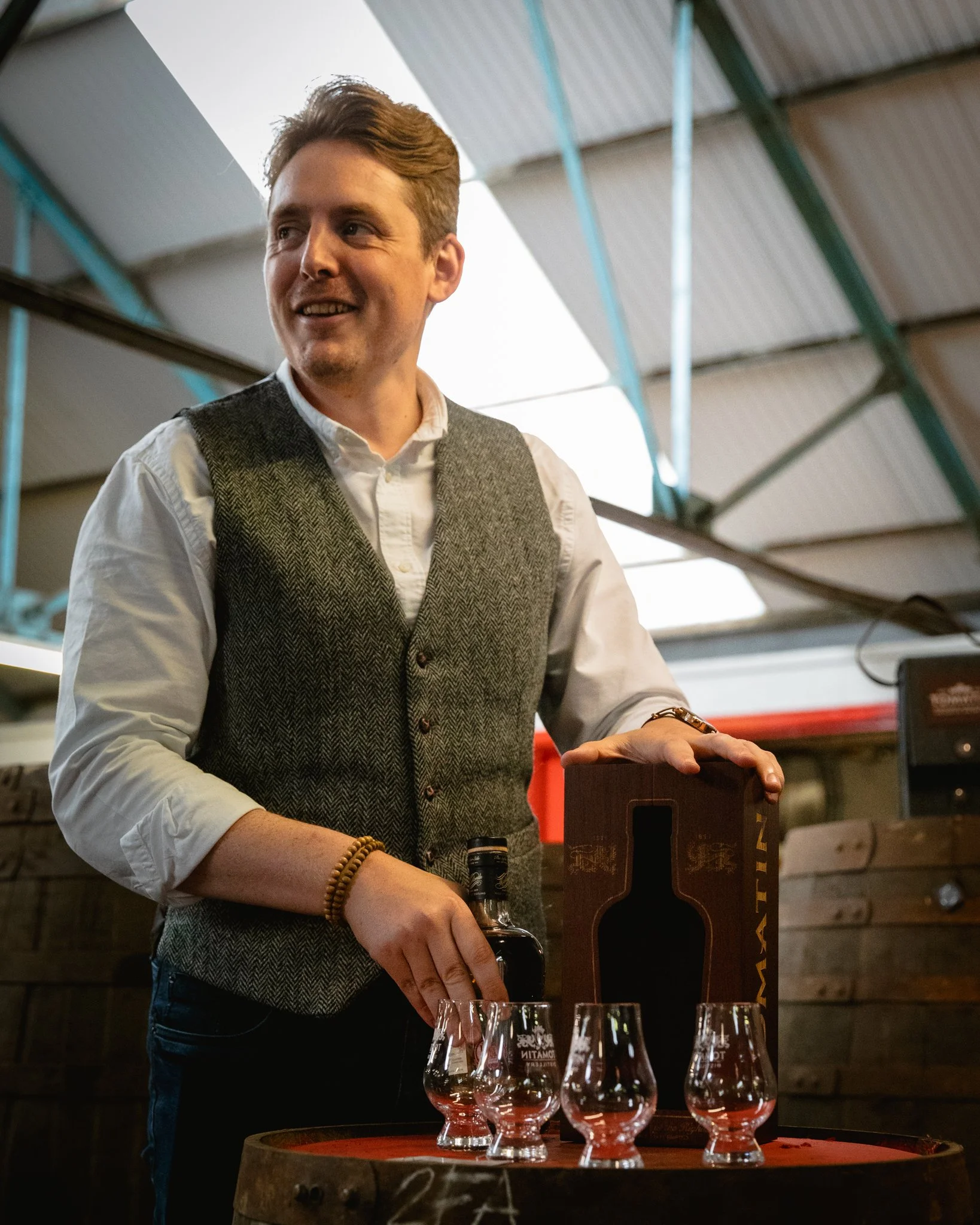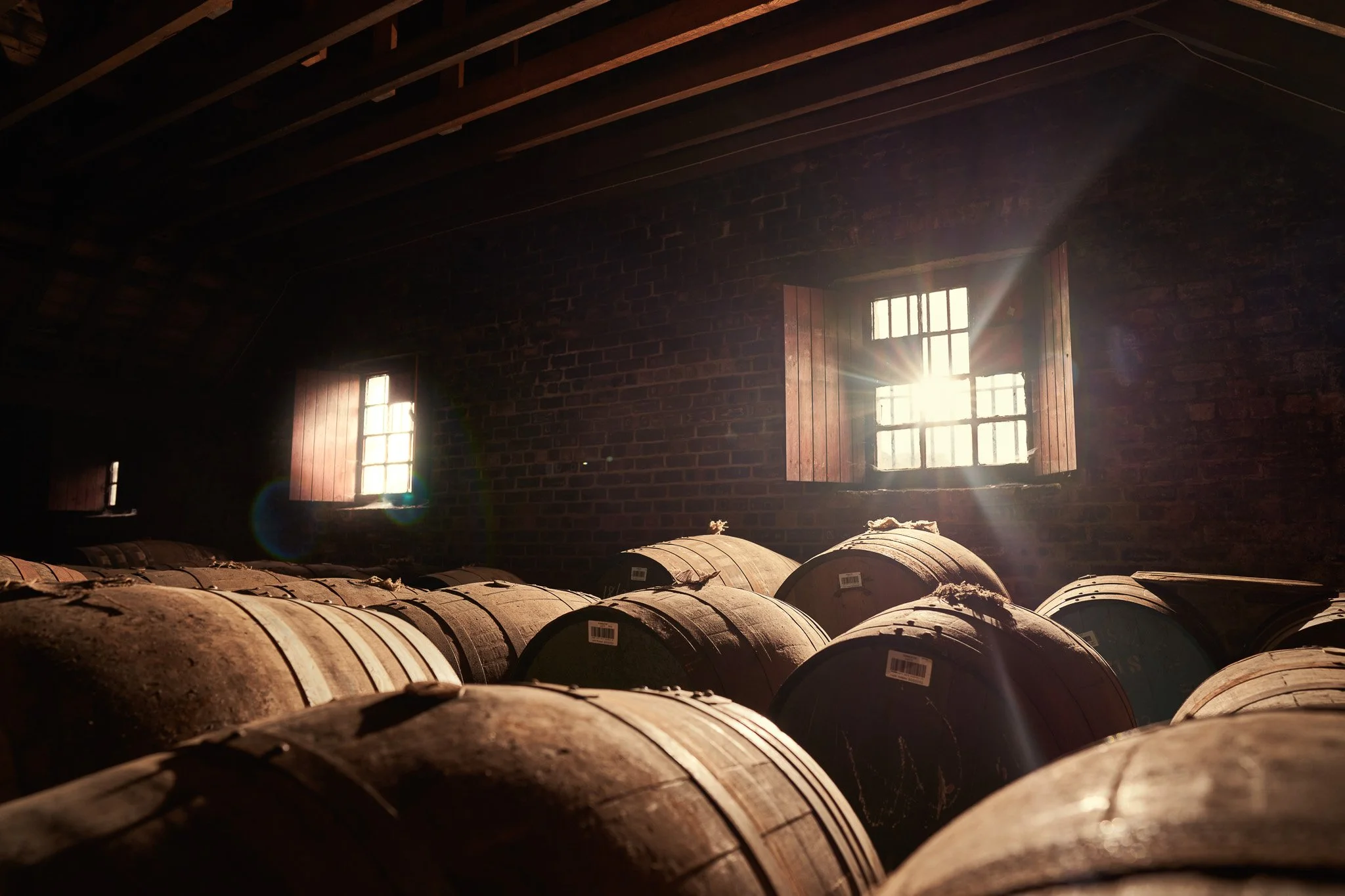The Blender Files: Scott Adamson
Tomatin Distillery, Takara Shuzo, Highland
In Arthur’s fascination to understand a little more about industry roles, he’s reaching out to the folk on the front lines. This is the second in his series of The Blender Files.
#2 Scott Adamson, Tomatin
What’s your job title at Tomatin?
Blender and Global Brand Ambassador. There’s a fair bit to both roles but essentially, I make whisky and then tell everyone how good it is.
And what do you do there?
In my capacity as Blender, I’m responsible for developing new products and ensuring the consistency of established products. Naturally this involves a lot of sampling but the bit that I really enjoy is the stock management. It’s like a giant jigsaw puzzle, making sure we have the correct volume of the correct spirit in the correct cask for a product that will be bottled in years to come.
As Global Brand Ambassador, I educate customers around the world about Tomatin and our products. That includes everything from small scale trainings for distributor staff to attending the biggest whisky festivals in the world and engaging with consumers.
How long have you worked there?
Eleven years.
I first started as an intern in 2012 researching the distillery’s history. I was only meant to be here for 8 weeks, but an opportunity opened in the sales team. In 2017 I moved to Whyte and Mackay but a year later I was asked if I’d like to return to Tomatin in an ambassadorial role.
How did you become involved in blending?
I think it was probably a case of right place, right time.
Back in 2012 the Sales and Marketing team was very small, and we were all involved in conversations around new products. Graham Eunson, our Master Distiller, would regularly bring samples of things he was working on over to the main office to get our thoughts. I don’t know quite how or when it happened, but before long I was writing the tasting notes for all our new releases.
When I rejoined the company in 2018, I was offered the opportunity to work more closely with Graham in cask selection and blending; it was a no brainer. I spent four years shadowing him and working towards my IBD Diploma in Distillation and then, in 2022 ‘Blender’ was officially added to my job title.
Has your diploma in distilling at the IBD influenced you so far?
Oddly enough, it’s had more of an influence on what I do as an Ambassador than it has on my role as Blender.
As a whisky fan, I’m interested in facts and as an ambassador I try to communicate our production and product stories in an honest but engaging way. The Diploma provides an incredible level of knowledge of distilling science and application. As an ambassador, I can present this information in a more simplified way.
It has also allowed me to have much more detailed conversations with people involved in other areas of production. For example, I’ve been able to work with our production team on spirits trials using different types of yeast and barley.
The diploma touches on the principles of blending but I think this is something you can only truly learn by observing someone who has been doing it for years, and then doing it yourself.
Do you have rules of thumb for blending?
Not really. The more you work with a spirit, or a particular cask type, the more you know what is likely to work and what might not work so well and that allows you to form guidelines. But I’m of the opinion that, when it comes to whisky, the moment you make a ‘rule’, whether as a blender or a drinker, you are potentially going to miss out on something special.
The only thing I would say is that in blending you have to be brutally honest with yourself. Sometimes what you are developing simply doesn’t work and you have to be able to recognise that. The good news is that for every time something goes wrong there will be another thing around the corner waiting to take you by surprise.
As both a blender and a brand ambassador at Tomatin; How do these two roles interact?
On the surface, they are two completely unrelated roles, but I’ve found that they feed into each other incredibly well. Internally, the mix of the two roles gives the company a link between production and marketing that ensures that everything we talk about is rooted in fact.
Having a front row seat in production means that I can talk about our whiskies with authority and answer any questions that customers may have. There is nothing quite like seeing someone’s eyes light up when they taste something that you’ve helped to create.
Equally, as an Ambassador you’re there to listen to what the market has to say and feed that back to both the commercial and production teams. I can’t tell you how many times I’ve had a conversation with a customer that has given rise to an idea that I’ve taken back to the blending room.
Can you tell us about Tomatin’s focus on different wine and spirit cask-finished whiskies? Do these whiskies require a particular approach from the blender?
Tomatin produces an incredibly versatile spirit which lends itself well to maturing in a wide variety of casks. It’s also a very elegant spirit which naturally suits finishes over full maturations a lot of the time. We have a forward-thinking approach to whisky and the fact that we have our own cooperage and that everything we produce is fully matured on site allows us to experiment with different finishes; we call them “the weird and wonderfuls”.
As you’d expect, any time we are working with a cask type that we haven’t used before, we will be drawing samples regularly to see how things are progressing. The great news is that we are never in a rush so there’s no pressure for these experiments to become a release. Typically, our limited releases will start off in refill hogsheads (for me the unsung heroes of whisky maturation) before a lengthy finish, often more than three years, in the cask of choice. A good Tomatin is a whisky that displays a balance of distillery and maturation character.
Also, is Cù Bòcan Tomatin made with peated malt?
Yes and no.
Cù Bòcan is a whisky made at Tomatin Distillery with peated malt, but it’s so much more than that. The fermentation is typically shorter giving us more cereal notes, the spirit cut is taken later which captures more phenols and the fact that it’s distilled in winter gives us an oilier spirit as it condenses faster.
Maybe the biggest difference between Cù Bòcan and Tomatin is the philosophy behind each brand. Tomatin, for all its finishes, is still fundamentally a traditional brand. Cù Bòcan is all about experimentation and unlocking unusual flavours. So far that’s been cask focussed but we have some pretty exciting barley and yeast trials going on behind the scenes.
What other alcoholic drinks are you fond of?
I’d probably be quicker listing what I don’t like. I’m a big sherry fan, love a well-made bourbon and have never been known to turn down a pint. Much like whisky, it’s the environment that shapes my enjoyment; where am I, who am I with, what are we doing?
What non-alcoholic drink are you particularly fond of?
Coffee, probably a bit too much.
How does your approach to blending differ from your approach to drinking?
I think there can be a massive difference between appreciation and enjoyment. Speaking specifically about whisky, I love going to a tasting and really getting to grips with a spirit and talking to others about it, but I can’t remember the last time I poured a whisky into a nosing glass at home.
When I’m blending, I have to be critical and can spend weeks developing a new product, nosing samples, taking notes, making adjustments, etc. But when it comes to drinking, I’m able to switch that part of my brain off and just enjoy the liquid in the glass.
Thanks to Scott and the team at Tomatin Distillery. Click here to see where they’re placed in our community Top 40.
AB
-
Dramface is free.
Its fierce independence and community-focused content is funded by that same community. We don’t do ads, sponsorships or paid-for content. If you like what we do you can support us by becoming a Dramface member for the price of a magazine.
However, if you’ve found a particular article valuable, you also have the option to make a direct donation to the writer, here: buy me a dram - you’d make their day. Thank you.
For more on Dramface and our funding read our about page here.








